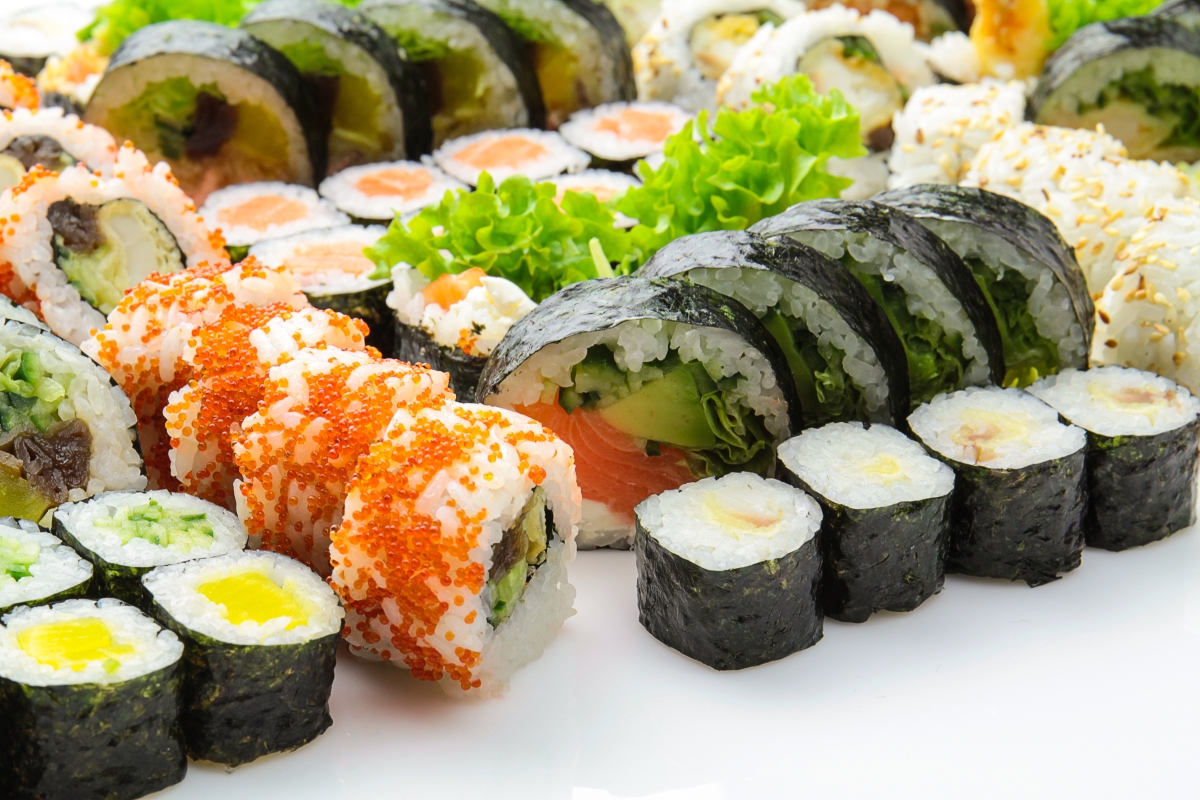Whether or not you can eat your Japanese delicacy sushi leftovers the next day is determined by several factors and the type of sushi. The temperature, the hygiene in the kitchen and the quality of the ingredients. If you buy your sushi from your favorite sushi bar that uses fresh ingredients, has good hygiene in the kitchen and you make sure that the sushi is not kept at room temperature for more than two hours, you can in most cases eat the sushi the next day without risking illness. But there is no short answer, read the article to learn more about what sushi is safe to eat.
- How Should Sushi Be Stored?
- The Best Way to Avoid Food Poisoning From Sushi Leftovers (Restaurant-bought)
- What Do I Need to Consider if I Want to Be Able to Eat Leftover Homemade Sushi
- Can I Eat My Leftover Sushi if I Reheat It First?
- Can I Eat My Leftover Sushi if I Freeze It First?
- What Are the Risks of the Different Sushi Ingredients?
- When Not To Eat Your Leftover Sushi
- Some Common Causes of Food Poisoning by Sushi
- Sources
How Should Sushi Be Stored?
At what temperature should the raw materials for sushi and prepared sushi be stored? If the sushi is stored at too high a temperature, disease-causing bacteria will grow, and in some cases form toxins. The most common pathogenic bacteria in sushi are Staphylococcus aureus and Bacillus cereus, but Salmonella and Listeria are also found quite often. It is therefore important to store the raw materials at a temperature below 40° F as most pathogenic bacteria cannot multiply at these temperatures. An exception is Listeria, which can grow even at refrigerator temperatures, but needs a long time to do so. Raw materials stored for several weeks in the refrigerator may therefore pose a risk to pregnant women or people with compromised immune systems.
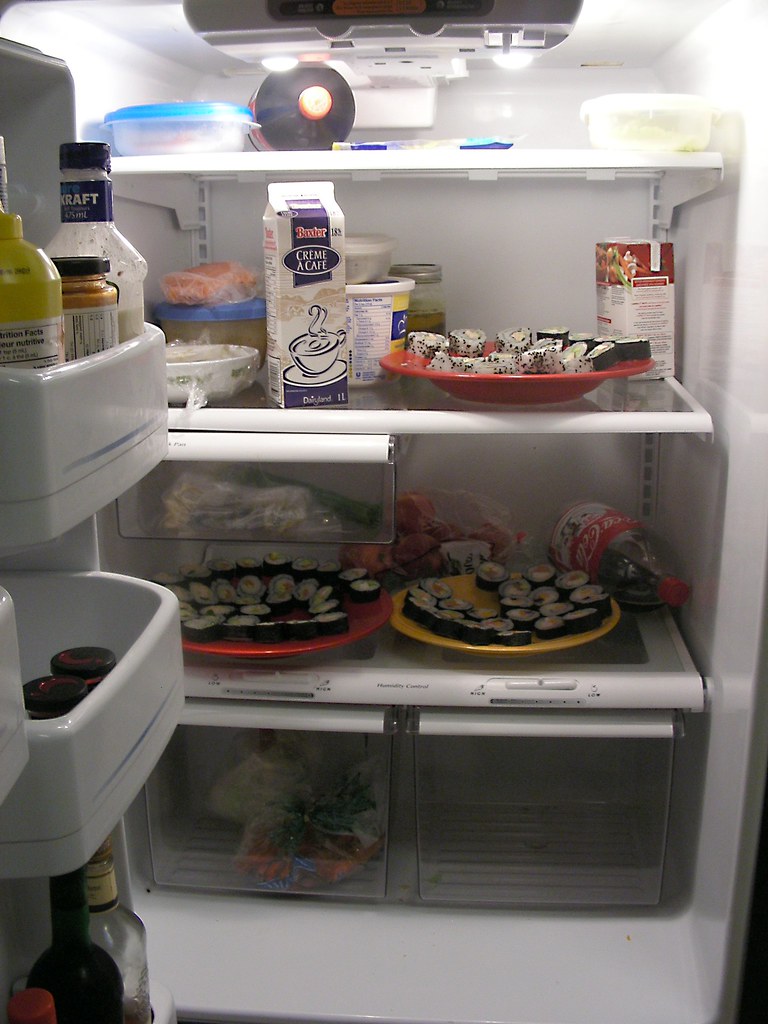
Photo: “12.30.09” by Dee West (Formerly deedoucette) is licensed under CC BY-NC-SA 2.0.
The sushi restaurant, therefore, needs to ensure that the ingredients are kept cold and that the finished sushi is not left at room temperature for more than a short time before serving or delivery. If this works and the consumer gets the leftovers into the fridge quickly, the risk of eating the leftovers is generally only marginally greater than eating it on the same day as preparation. These principles also apply to store-bought sushi packaged in an airtight container – if the hygiene was good, fresh ingredients were used and the temperature was kept low enough, the sushi may be ok to eat several days after cooking. Note the expiry date on the packaging, it is set to minimize the risk of getting sick. However, the fact that the expiry date has passed does not necessarily mean that the sushi is inedible, but the risk of becoming ill is probably greater.
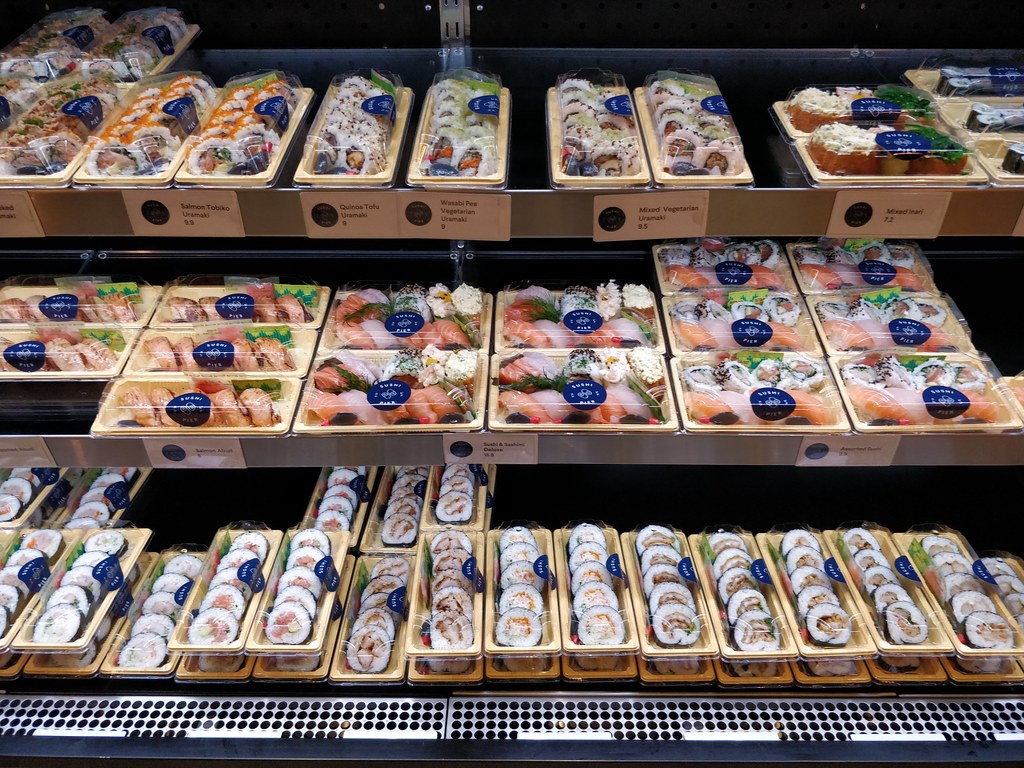
Photo: “Sushi display fridge – Sushi Pier, Camberwell Place – close” by avlxyz is licensed under CC BY-NC 2.0.
The Best Way to Avoid Food Poisoning From Sushi Leftovers (Restaurant-bought)
Good Hygiene and Fresh Ingredients
Buy your sushi at a restaurant with good hygiene and ingredients.
A good sushi chef has a clean kitchen. Proper cleaning is especially important for those businesses that serve food that is not heated.
The chefs are healthy when they work in the kitchen. Since the sushi is not heated, infectious viruses such as Norovirus can otherwise be easily transmitted to the consumer from the kitchen staff. A serious chef wears gloves, reducing the risk of transferring bacteria or other microorganisms, e.g. staphylococcus (naturally found on the skin) to the consumer.
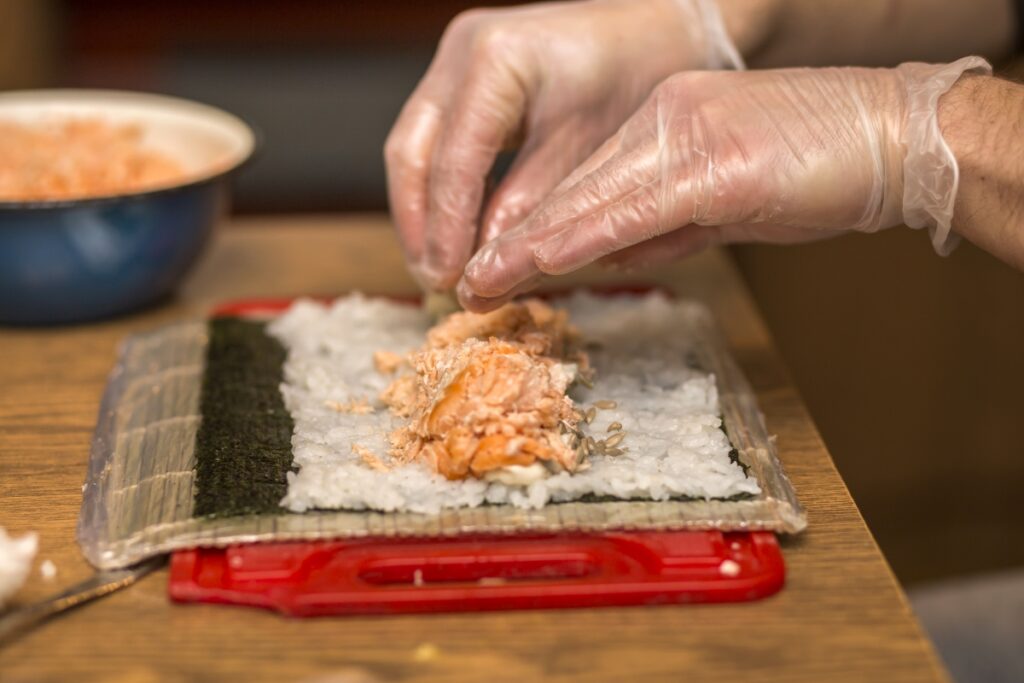
A good restaurant makes sure to buy fresh ingredients supplied by producers who maintain a high quality in their production and minimize the presence of pathogens. Fish should, for safety reasons, be frozen at -4 degrees Fahrenheit for seven days or -31 degrees Fahrenheit for 15 hours to kill parasites. This is important when making Sashimi which is raw sushi made with thinly sliced raw meat, typically fish i.e salmon sashimi.
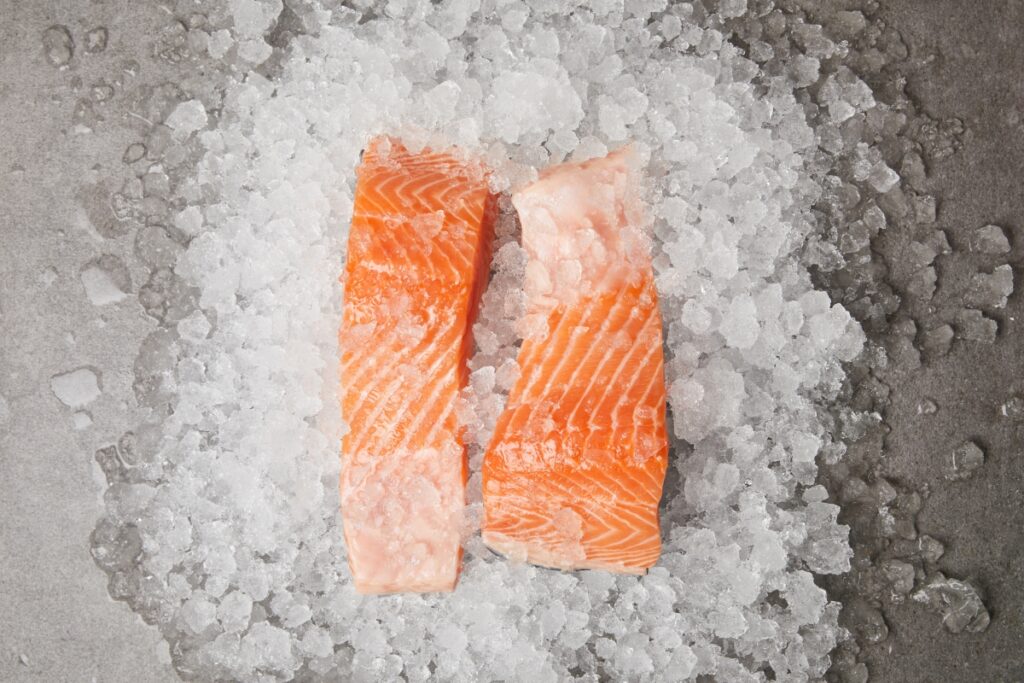
The kitchen needs to be well-cleaned and sushi ingredients need to be kept separate from foods that need to be heated, such as raw chicken or raw meat. The sushi is kept at room temperature for a very short time to prevent bacteria from multiplying.
Avoid Touching the Sushi With Your Hands
Avoid touching sushi pieces that you intend to save for later with your hands or with unclean cutlery. Staphylococcus bacteria are found in the mouth and on the hands and, when they get on food, can form toxins if the temperature exceeds 10 degrees for a few hours
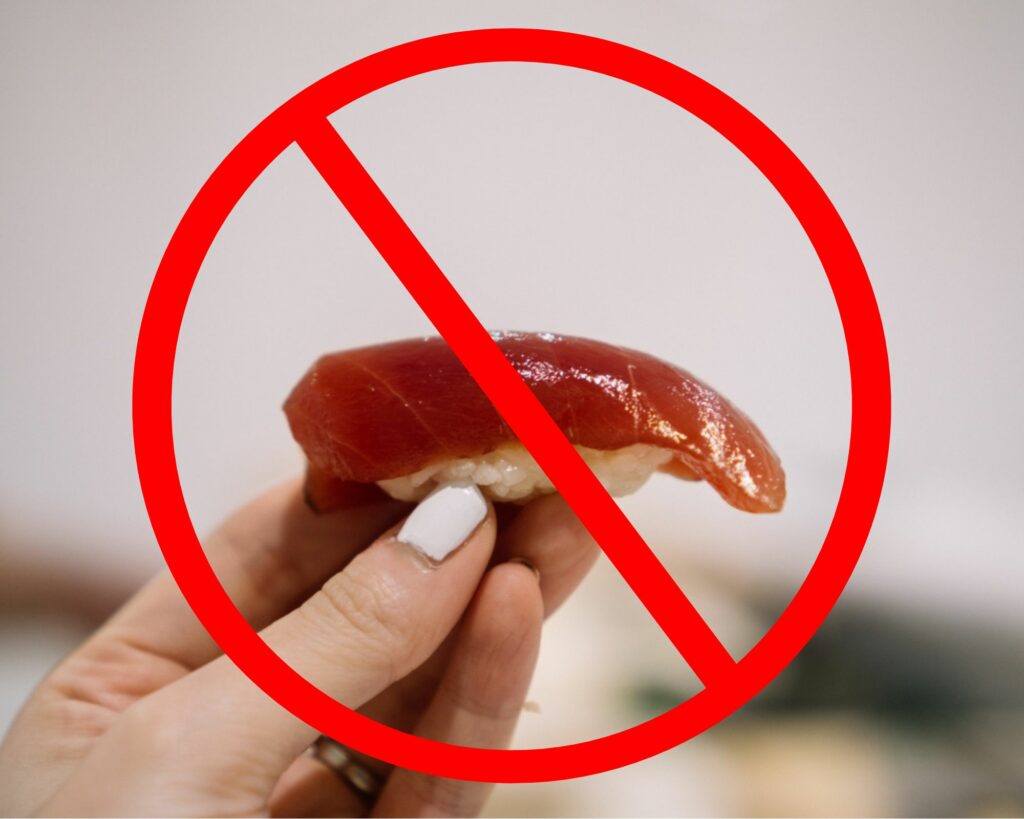
Put the Sushi in the Fridge Quickly
Cover the leftovers and make sure they get into the fridge quickly. The refrigerator effectively slows down the ability of bacteria to multiply.
Maintain the Right Temperature in the Refrigerator
Ensure that the refrigerator temperature is no higher than 40° F. The vast majority of bacteria do not multiply at these temperatures.
What Do I Need to Consider if I Want to Be Able to Eat Leftover Homemade Sushi
Fresh Ingredients Correctly Stored
Keep the cold chain, it makes your sushi last longer. Make sure to use fresh ingredients (fresh fish, fresh vegetables) that have been kept refrigerated at all times (a rule of thumb is that products bought refrigerated should be kept refrigerated at all times).
Freeze Fresh Fish to Avoid Parasites
As mentioned above fresh fish i.e raw salmon should be frozen at -4 degrees Fahrenheit for seven days or -31 degrees Fahrenheit for 15 hours to kill parasites.
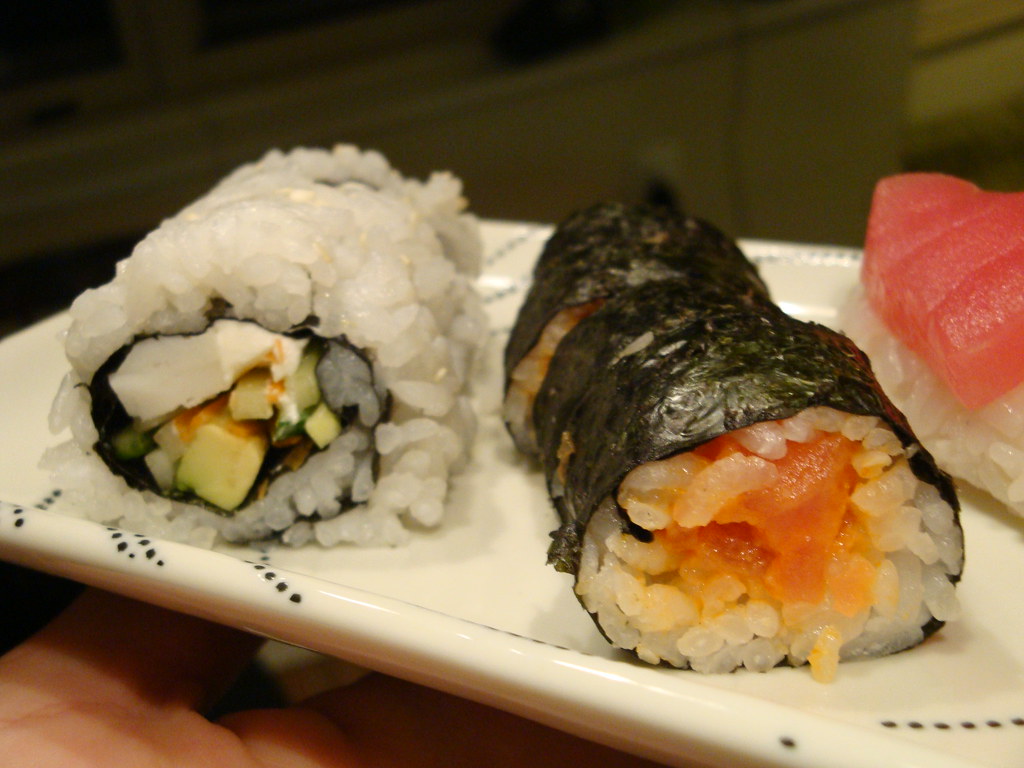
Photo: “Spicy tuna and California Roll” by HerrVebah is licensed under CC BY-NC-SA 2.0.
Rinse Vegetables Thoroughly
Vegetables should be thoroughly rinsed in water of drinking water quality. This is done to wash away visible dirt but also bacteria, viruses, and pesticide residues.

Do Not Use Raw Meat
Do not use raw meat in sushi unless you have at least heated the surface of the meat beforehand (this applies to beef and lamb, pork and chicken should be cooked through before consumption).
Proper Hygien
Make sure you have clean knives, and clean cutting boards and wash your hands before cooking.
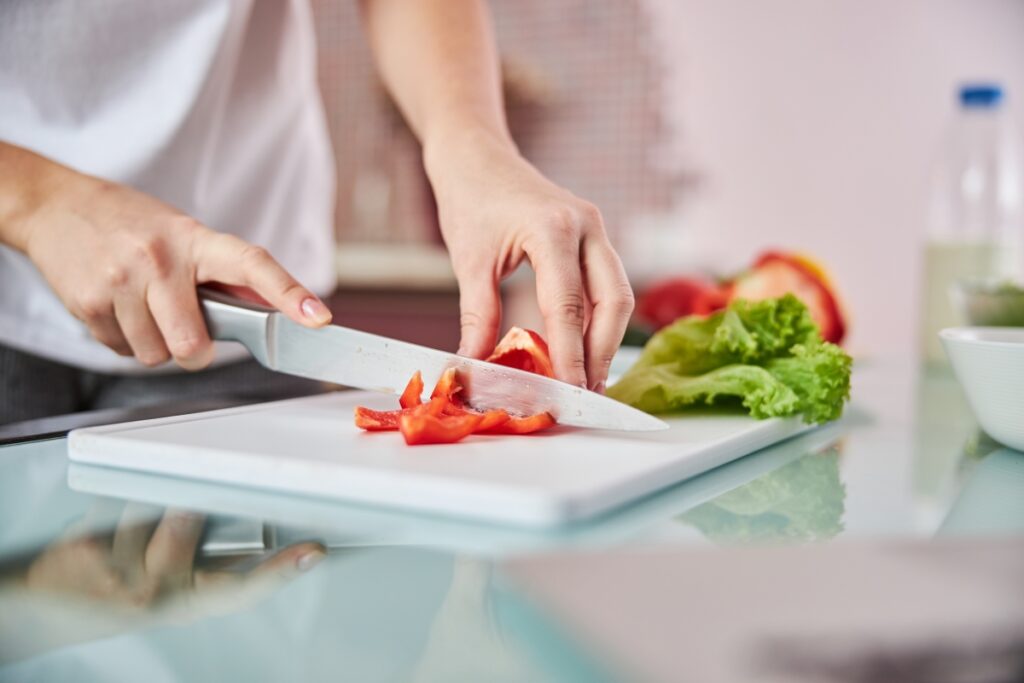
Cool Rice Quickly
Rice with rice vinegar is the main ingredient in sushi of all kinds. After cooking, ensure that the sushi rice is quickly cooled to the temperature at which it will be consumed. If the sushi is not to be eaten immediately, cool the rice rapidly to 40 degrees Fahrenheit. The best way is to divide the rice into smaller containers.
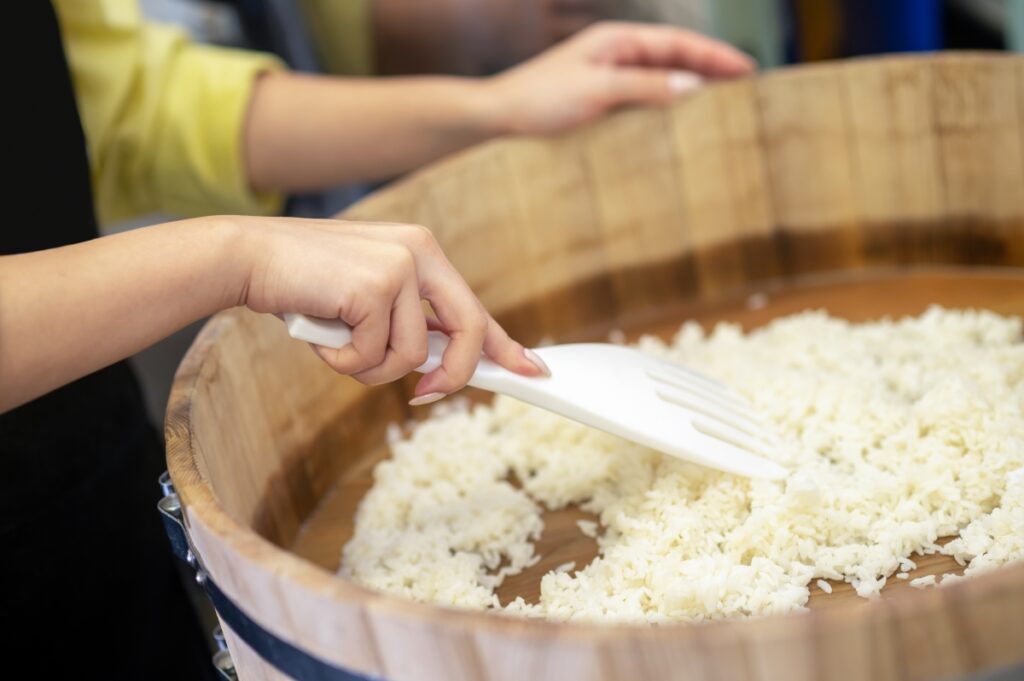
Keep in Fridge
Do not leave sushi leftovers at room temperature, put them in the fridge as soon as possible. Preferably place the sushi in a sealed container, cover it with plastic wrap, or put it in a clean plastic bag.
Can I Eat My Leftover Sushi if I Reheat It First?
Whether or not you can eat your leftover sushi after reheating depends on whether the sushi was prepared correctly and stored in the refrigerator afterward. Reheating sushi does not mean that you cannot get sick. Reheating effectively kills bacteria and viruses, but not toxins, so if poor ingredients were used, hygiene in the kitchen was poor or if the sushi was kept warmer than 50 degrees Fahrenheit for several hours, toxins may have been produced by the bacterium Staphylococcus aureus. The toxin is not destroyed by heating and will make you sick. However, most people recover without complications after 1-2 days.
Can I Eat My Leftover Sushi if I Freeze It First?
In most cases, freezing does not kill bacteria, it just stops them from growing.
What Are the Risks of the Different Sushi Ingredients?
If the sushi is prepared with good ingredients, good hygiene in the kitchen, and cooled quickly after preparation, all sushi can be eaten as leftovers the next day or days without much risk. However, pregnant women and people with compromised immune systems should always be more careful, especially if the ingredients may have been stored for a long time in vacuum packaging. The ingredients in sushi that become inedible most quickly are raw seafood and vegetables.
Vinegared Rice
The sushi rice itself can cause food poisoning if cooked incorrectly. As soon as the rice is cooked, it should be cooled down to serving temperature, otherwise, the bacteria Bacillus cereus in particular can produce toxins that can cause diarrhea and/or vomiting.

Soy Sauce
Pure soy sauce can be eaten at any storage temperature. However, if you have dipped the sushi in the soy sauce, it may have become contaminated and bacterial growth can occur.

Nori Sheets
Dry unused nori sheets have a very long shelf life and can be eaten no matter how they have been stored. When used in sushi, nori sheets may have a shorter shelf life as they are affected by other ingredients in the sushi.
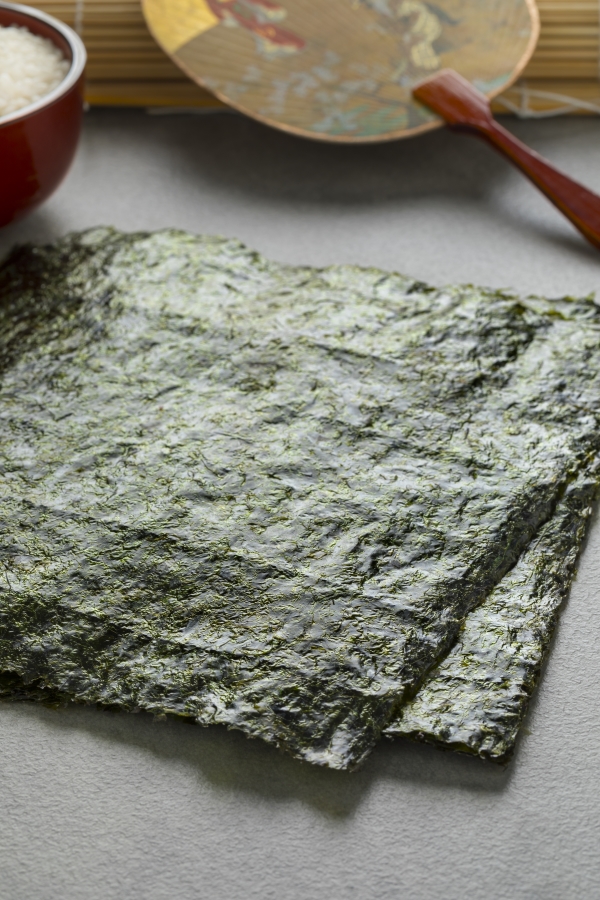
Wasabi
Wasabi can be eaten as a leftover if it has been stored in the refrigerator. If you dipped the sushi in the wasabi when you originally ate it, the shelf life of the wasabi will deteriorate.

Sesame Seeds
Sesame seeds can be eaten as leftovers regardless of storage, this is not a risky product. It may though have a shorter shelf life if they are affected by the moisture of other ingredients in the sushi.

Raw Seafood
To ensure safety when eating sushi with raw seafood, it is important to take food hygiene precautions such as carefully handling and preparing the food as well as avoiding raw fish and meat especially if you are a vulnerable individual. According to the Food and Drug Administration, raw fish can harbor parasites, bacteria, and viruses which can lead to infections and food poisoning. It is therefore advisable to follow safety protocols to reduce the risk of foodborne illnesses.
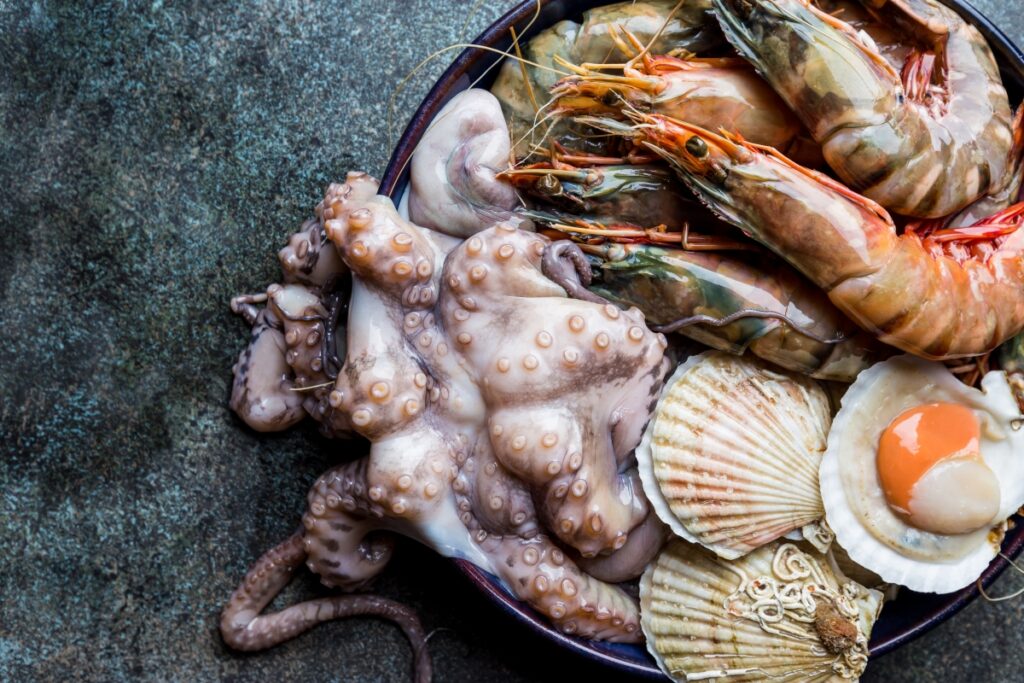
The FDA recommends the following for seafood preparation or storage to kill parasites: Cook seafood adequately, to an internal temperature of at least 145° F (~63° C).
Raw Fish
Fish may contain parasites and should be frozen before making sushi. The FDA recommends the following for fish preparation or storage to kill parasites. Freezing the fish:
- At -4°F (-20°C) or below for 7 days (total time), or
- At -31°F (-35°C) or below until solid, and storing at -31°F (-35°C) or below for 15 hours, or
- At -31°F (-35°C) or below until solid and storing at -4°F (-20°C) or below for 24 hours.
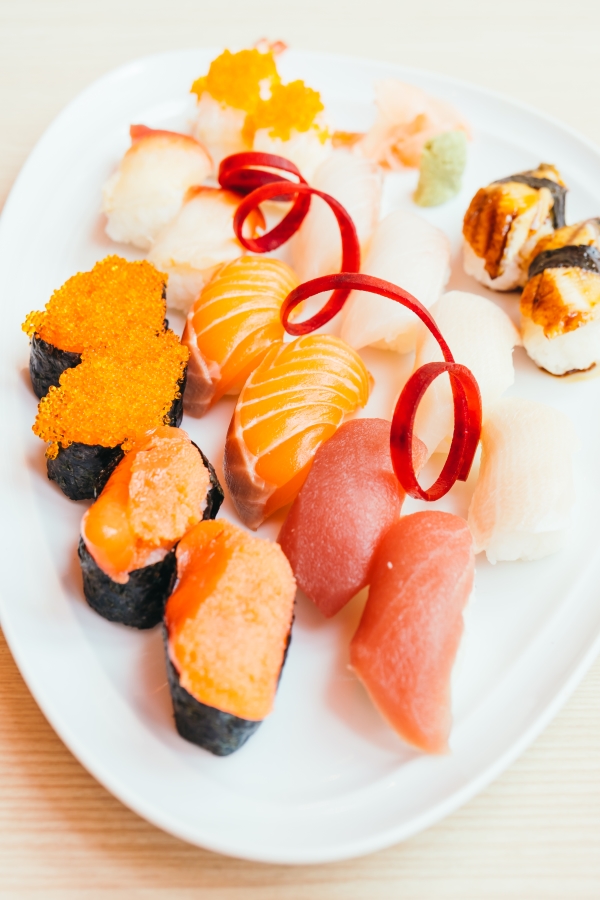
Vegetables
It is important to remember that raw vegetables in Sushi can pose a risk of foodborne illness.
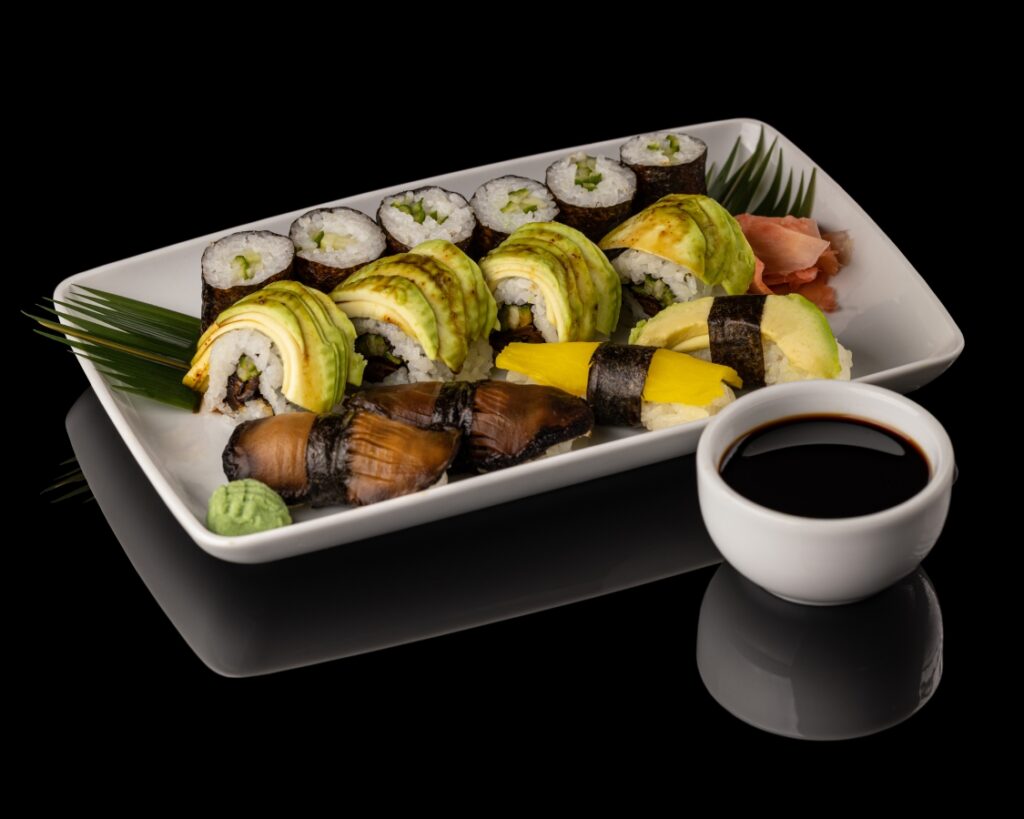
To reduce the risk of illness, it is best to cook vegetables for consumption or wash them thoroughly under running water before eating. The Centers for Disease Control and Prevention estimates that germs on vegetables eaten raw cause a large percentage of US foodborne illnesses. Additionally, while raw vegetables can be a part of a healthy diet, they should be consumed with caution, as they may be contaminated with harmful microorganisms which can cause food poisoning.

When Not To Eat Your Leftover Sushi
- Unpleasant odor. If the sushi smells bad or has a fishy smell, this is bad news and you should not eat it.
- Bad taste. Use your taste buds – if the sushi tastes bad, it’s bad sushi and you shouldn’t eat it.
- An expired date on the package. On prepackaged grocery store sushi, follow the use-by dates on the packages to be on the safe side.
Some Common Causes of Food Poisoning by Sushi
| Agent | Ingredient | Symtom | How to avoid |
|---|---|---|---|
| Bacillus Cereus | Rice | Diarrhea Vomiting | Cool rice immedeatly |
| Staphylococcus aureus | Fish Meat | Nausea, vomiting, stomach cramps, diarrhea | Wash your hands before cooking, wears gloves, and store the food in the fridge (max 40° F) |
| Salmonella | Fish Meat | Diarrhea (can be bloody), fever, stomach cramps, vomiting | Clean hands and utensils. Separate raw meat from food that is not to be cooked. Cook food properly. |
| Listeria | Fish Meat Vegetable | Fever and flu-like symptoms (such as muscle aches and fatigue), headache, stiff neck, confusion, loss of balance, and seizures. Miscarriage in pregnant people. | Don’t eat vacuum-packed fish without heating. Rinse vegetables. |
| Norovirus | Vegetable Shellfish (such as raw oysters) | Diarrhea, vomiting, nausea, stomach pain—fever, headache, and body aches are also possible | Make sure to not prepare food for others if you are not healthy. |
| VTEC | Vegetable, red meat | Wash your hands, and use separate cutting boards for raw meat and vegetables. Heat at least the surface of the meat. | |
| Entamoeba histolytica | Vegetable | Fever Diarrhea Vomiting | Rinse vegetables in clean water |
| Echinococcus multilocularis | Vegetable | Rinse vegetables in clean water. Wash hands. | |
| Pseudoterranova decipiens | Wild fish | Nausea Vomiting | Freeze wild fish or heat to 140° F for 1 min. |
| Diphyllobothrium latum | Wild fish | Increased or decreased appetite Abdominal pain Anaemia | Freeze wild fish for at least 3 days in 0° F |
| Anisakiasis/Herring worm disease | Marine fish and squid species | Abdominal pain, nausea, vomiting, abdominal distention, diarrhea, and allergic reactions | Freeze fish at -4°F (-20°C) or below for 7 days |
| Scombroid poisoning | Seafood i.e Tuna | Facial flushing, dizziness, sweating, nausea, and headache, occur within minutes to 2 hours of consuming infected fish. | Continuous icing or refrigeration at <32 F (<0 C) of all potential scombrotoxin-producing fish from the time they are caught until they are cooked |
| Vibriosis | Shellfish, particularly oysters | Diarrhea, fever, abdominal cramps, nausea, and vomiting. Vibriosis can lead to a life-threatening infection for people with weakened immune systems or liver disease. | Don’t eat raw or undercooked oysters or other shellfish. Cook them before eating. |
Sources
Centers for Disease Control and Prevention www.cdc.gov
U.S. Food and Drug Administrationhttps www.fda.gov
The Food Safety and Inspection Service www.fsis.usda.gov/
